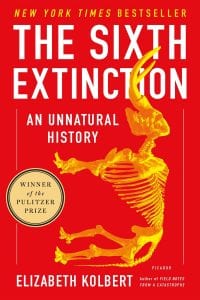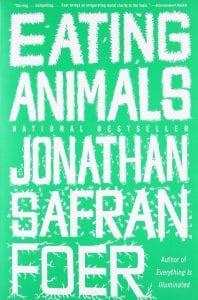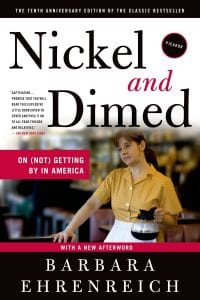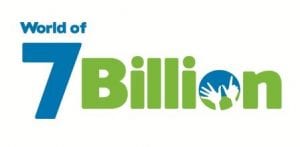The World of 7 Billion student video contest is back for the 2018-2019 school year! This year’s topics are: Preserving Biodiversity, Sustainable Resource Use, Human Rights. In preparation for creating their videos, students may want to consider reading some contemporary books as part of their research.
4 Books on Preserving Biodiversity
 1. The Death and Life of the Great Lakes by Dan Egan
1. The Death and Life of the Great Lakes by Dan Egan
The Great Lakes account for over 21 percent of the planet’s fresh water. As such, it is important that the lakes remain healthy and stable. In The Death and Life of the Great Lakes, author Dan Egan explores the series of invasive species that, for decades, have been harming the complex ecosystems of the Great Lakes. Egan uncovers the history of the Great Lakes and, in doing so, impresses upon the reader an urgent but hopeful message regarding their global importance.
2. Where the Wild Things Were: Life, Death, and Ecological Wreckage in a Land of Vanishing Predators by William Stolzenberg
In Where the Wild Things Were, journalist William Stolzenberg delves into the role of top predators in our global food chain. He reveals the delicate balance between predator and prey, a balance that has often been disrupted by human activity. The disappearance of top predators across various ecosystems has far-reaching ramifications for both local ecosystems and our global community.
 3. The Sixth Extinction: An Unnatural History by Elizabeth Kolbert
3. The Sixth Extinction: An Unnatural History by Elizabeth Kolbert
In this Pulitzer Prize winning non-fiction book, Elizabeth Kolbert examines what is likely to be “mankind’s most lasting legacy” – mass extinction. She works her way through the previous five mass extinction events and relates them to our current biodiversity crisis. By exploring different species (some facing extinction, some already gone) Kolbert seeks to understand the ramifications of humanity’s “reassembling of the biosphere.”
4. Life in the Balance: Humanity and the Biodiversity Crisis by Niles Eldredge
In Life in the Balance, Niles Eldredge, one of the world’s most renowned paleontologists, explores the current biodiversity crisis facing our planet. As species die at an unnaturally high rate, Eldredge examines the impact of humanity on biodiversity, as well as the impact of biodiversity on human health and well-being. Life in the Balance is a thoughtful examination of life on our planet, delving into the importance of the millions of species and ecosystems that exist on Earth.
4 Books on Sustainable Resource Use
1. Plastic: A Toxic Love Story by Susan Freinkel
Plastic, Freinkel claims, built the modern world and her book Plastic, follows the story of eight plastic objects (including combs and grocery bags) seeking to understand our relationship with plastic – a relationship which has morphed into an unhealthy, unsustainable reliance. She explores the benefits of plastic as well as the dangers to both the environment and our bodies. Freinkel embarks upon an ambitious journey, attempting to make us aware of our consumption patterns and to prevent a plastics-driven environmental crisis.
2. Life Without Plastic: The Practical Step-by-Step Guide to Avoiding Plastic to Keep Your Family and the Planet Healthy by Chantal Plamondon and Jay Sinha
After having their first child, this parent duo became concerned with the adverse health effects caused by plastics. Plamondon and Sinha envisioned a society in which alternatives to plastic are both accessible and affordable. Along those lines, they created a step-by-step guide to help eliminate plastic from your life. A reminder of what each of us can do in our own lives to protect the environment, Life Without Plastic is a helpful entry point into a plastic-free lifestyle.
 3. Eating Animals by Jonathan Safran Foer
3. Eating Animals by Jonathan Safran Foer
In Eating Animals, Jonathan Safran Foer seeks to understand what it means to consume meat in our industrialized world. Eating meat today, Foer states, has different ramifications than it did in the past, for the animals involved, the environment, and for ourselves. Foer thus sets himself apart from other advocates for veganism/vegetarianism, claiming that consuming meat isn’t inherently bad, but rather circumstantially bad. Attempting to remedy the lack of transparency in the meat industry, Eating Animals takes the reader through the current meat industry and provides alternatives that are healthier for both our bodies and the environment.
4. The Boy Who Harnessed the Wind: Creating Currents of Electricity and Hope by William Kamkwamba and Bryan Mealer
Based on Kamkwamba’s own life, The Boy Who Harnessed the Wind follows the story of a young boy in Malawi, one of the poorest countries in the world. Forced to drop out of private school after a famine leaves his family in abject poverty, Kamkwamba uses his own inventiveness to improve his family’s standard of life. He creates a makeshift windmill in his village to bring electricity to his family’s home. A hopeful, personal novel, The Boy Who Harnessed the Wind showcases the power of human ingenuity as well as the ability of renewable energy to help bring families out of poverty.
4 Books on Protecting Human Rights
1. The End of Poverty: Economic Possibilities for Our Time by Jeffery Sachs
In The End of Poverty, Jeffery Sachs examines the interwoven economic, political, social, and environmental issues that combine to keep nations impoverished. He examines a diverse set of countries, from Bolivia to Bangladesh, combining storytelling with insightful analysis. Sachs provides a clear image of how dire the issue of global poverty truly is, but also leaves the reader feeling that the issue is solvable by providing immediate as well as long-term solution proposals.
2. I Am Malala: The Girl Who Stood Up for Education and Was Shot by the Taliban by Malala Yousafzai and Christina Lamb
The true story of Malala Yousafzai’s life, I Am Malala explores what it means to have to fight for fundamental rights. Malala, now a global advocate for education, was shot by the Taliban in her native Pakistan for attempting to access her right to an education. I Am Malala humanizes the millions of women and girls who, to this day, are shut out of schooling, unable to reach their fullest potential.
 3. Nickel and Dimed: On (Not) Getting by in America by Barbara Ehrenreich
3. Nickel and Dimed: On (Not) Getting by in America by Barbara Ehrenreich
Curious to see what life in America was like for people with low incomes, Barbara Ehrenreich went undercover to work minimum wage jobs. Ehrenreich explores the omnipresent economic insecurity that plagues millions of Americans and the havoc that it wrecks on emotional, mental, and physical health. An eye-opening and honest portrayal of life with a minimum-wage job, Nickel and Dimed provides an unflinching view of the wealth disparities in America and explores the poverty that still exists in the richest country in the world.
4. Toxic Inequality: How America’s Wealth Gap Destroys Mobility, Deepens the Racial Divide, and Threatens Our Future by Thomas Shapiro
In Toxic Inequalities, Thomas Shapiro explores the concepts of economic security and justice. Why are some communities, particularly communities of color, experiencing higher and more pervasive levels of poverty? By following over 200 families for more than twelve years, Shapiro provides valuable insight into the determinants of wealth in America.



